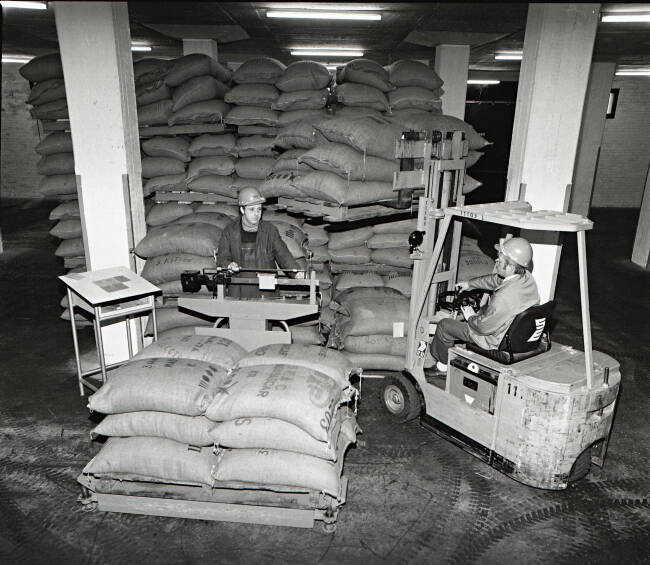HHLA helped to write the story of the Elbphilharmonie and HafenCity. More than most Hamburg residents know.
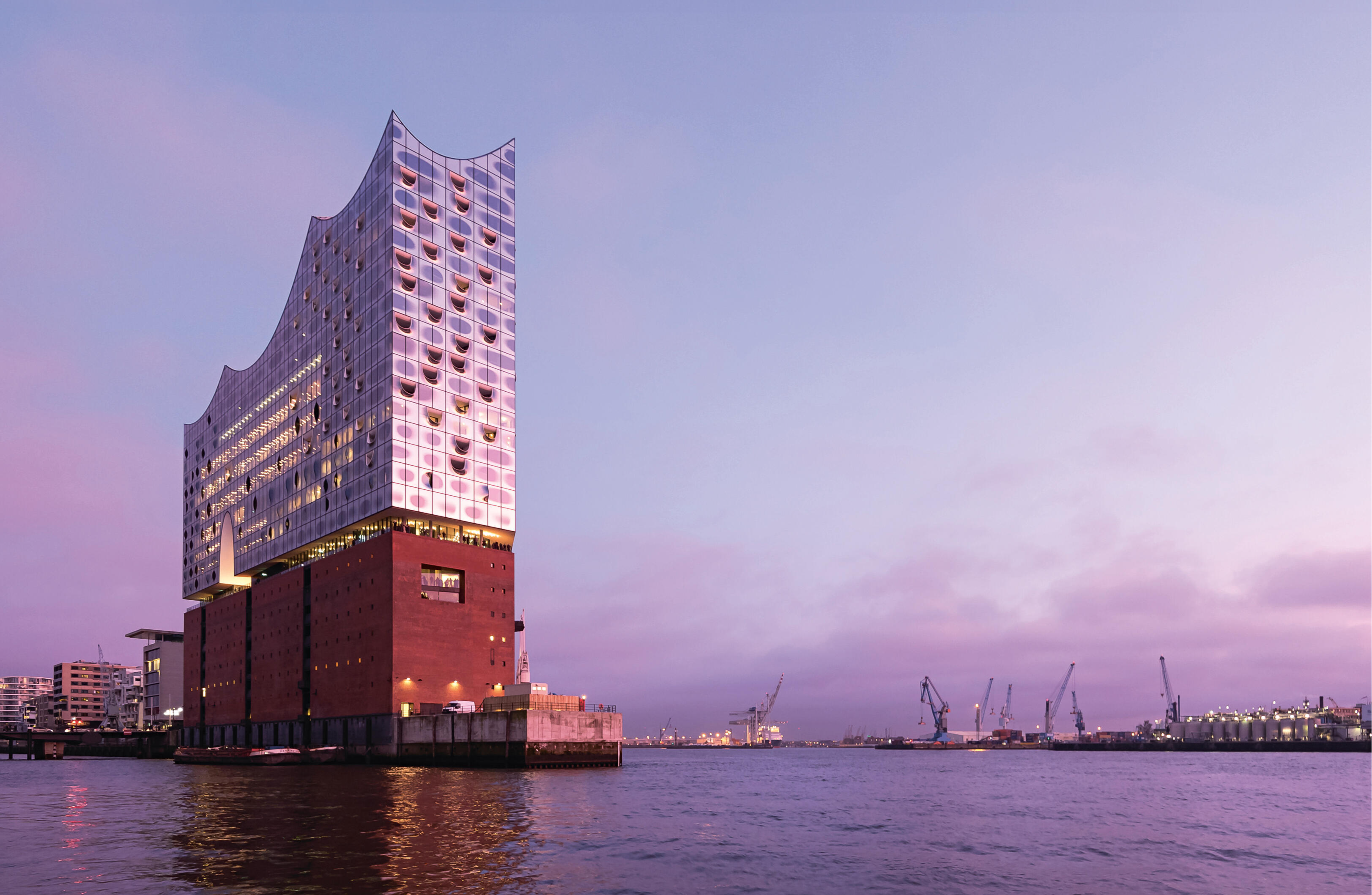
The tip of the Kehrwieder, which marks the northern boundary of the Speicherstadt historical warehouse district, had always shaped the water side of Hamburg. For a long time, a building stood here with a so-called time ball towering above it, enabling navigators on board the ships to set their chronometers. It was badly damaged in World War Two and demolished in 1963. The architect Werner Kallmorgen, who played an instrumental role in the reconstruction of Hamburg, came up with the purist cube design for a new quayside warehouse known as Kaispeicher A. He had designed the roughly 30,000 square-metre space entirely for the storage of break-bulk cargo. However, such bags, crates and barrels had barely been handled since the container conquered the port on the other side of the Elbe.
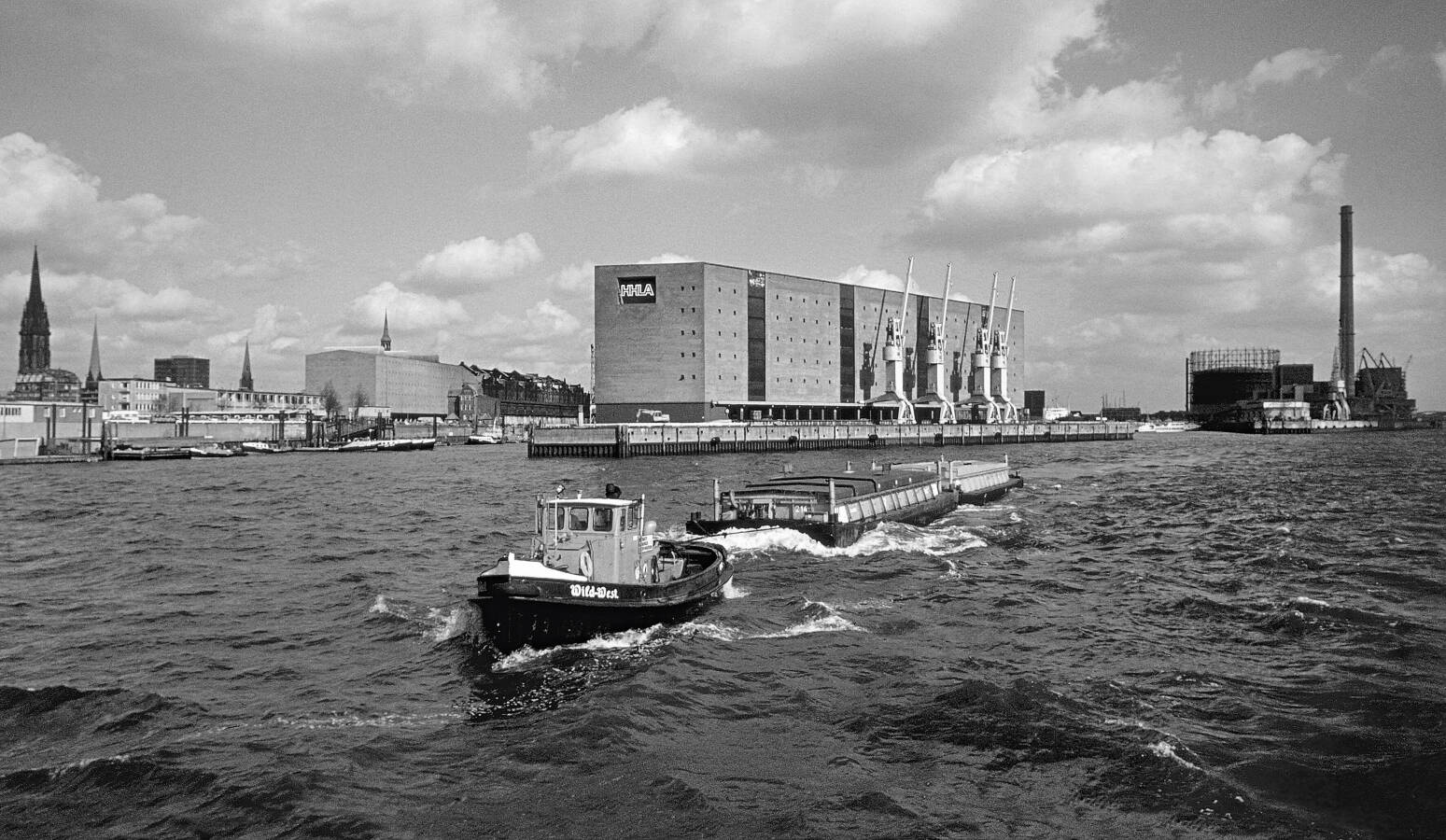
From the Kaispeicher to the Elbphilharmonie was a long way. The building bearing HHLA’s logo has not been used for port handling since the 1970s. The old structure is still clearly recognisable in Hamburg’s new landmark.
The semi-gantry cranes, which still stand refurbished outside the concert hall, no longer handled many ships, and the storage areas were not used to capacity. It stood empty for a long time before even longer discussions were held about the highly attractive location. It was not until the end of 2003 that the Hamburg Senate backed the concept of an “Elbphilharmonie”, which today sits spectacularly atop the former HHLA warehouse.
Urban development in the port
After the fall of the Wall, Hamburg grew at an unimaginable speed. But where else could the city expand? Even though certain areas belonged to it, they were anything but freely available. The land around Sandtorhafen, for example, where the free port extended to the fringes of the city centre. Long-standing tenants sat there and successful logistics specialists worked there. The task of acquiring this land for the construction of a HafenCity was taken care of by the specially founded Gesellschaft für Hafen- und Standortentwicklung (GHS). This wholly owned HHLA subsidiary bought up usage rights and real estate in the years that followed. In fact, it was able to bring all the properties in question under its – and thus municipal – control. It is astonishing that the “secret state action” remained concealed from the public for six years. This prevented speculation and price gouging. It was only when the urban development “master plan” was ready that Hamburg’s Mayor Henning Voscherau presented the concept of a HafenCity on 7 May 1997.
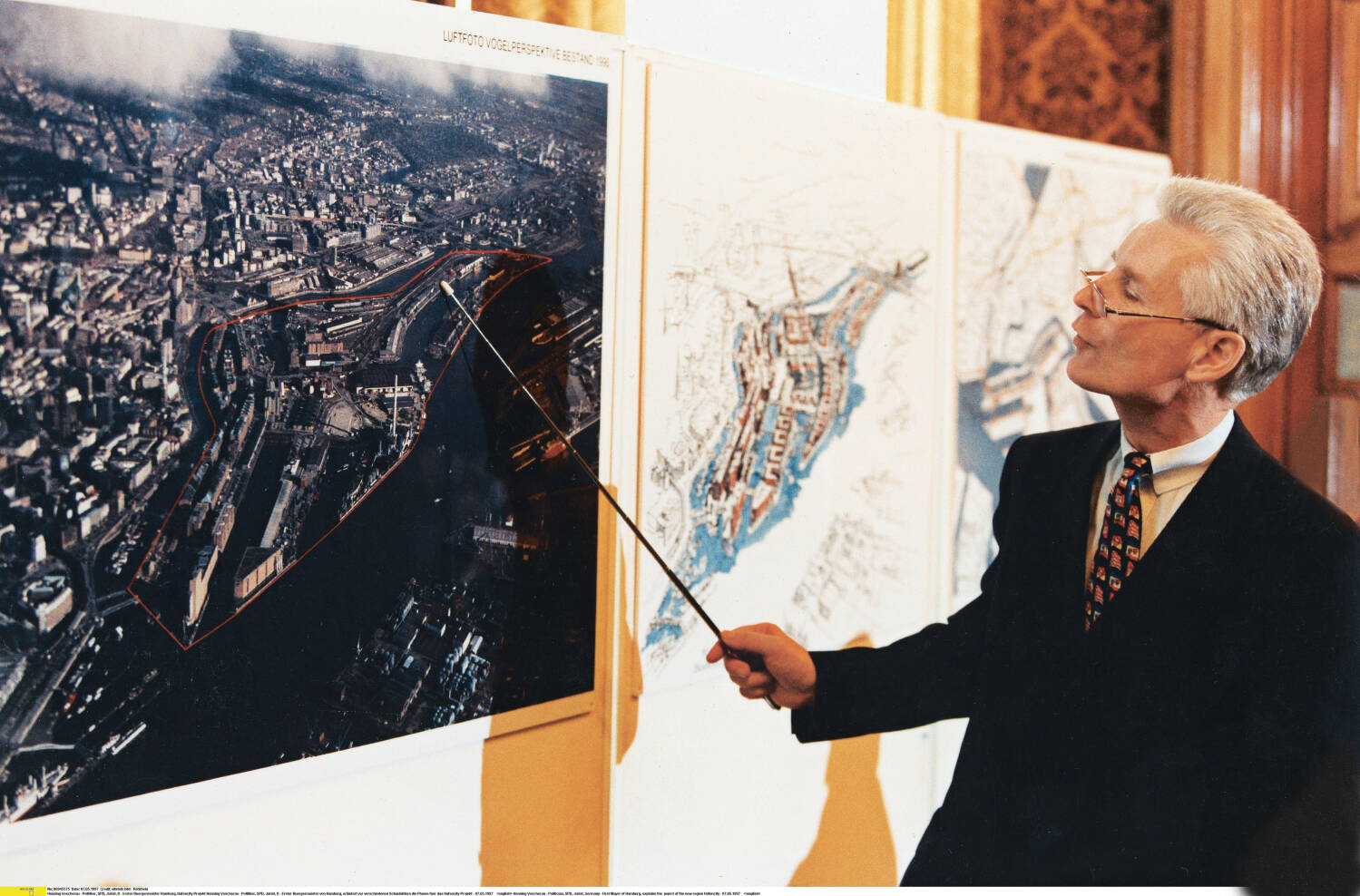
Secret preparations: When Hamburg’s Mayor Henning Voscherau presented the plans for a “HafenCity” on 7 May 1997, the public was surprised. Only a few associates at HHLA had known about it.
Only a small group around the then HHLA Chairman of the Executive Board Peter Dietrich had known about it. As part of the secret deal, HHLA finally got the opportunity to build a new container terminal. It swapped the land acquired for urban development for an extensive site in the former fishing village of Altenwerder. The port expansion had been planned for around 40 years, and now it could finally become reality.
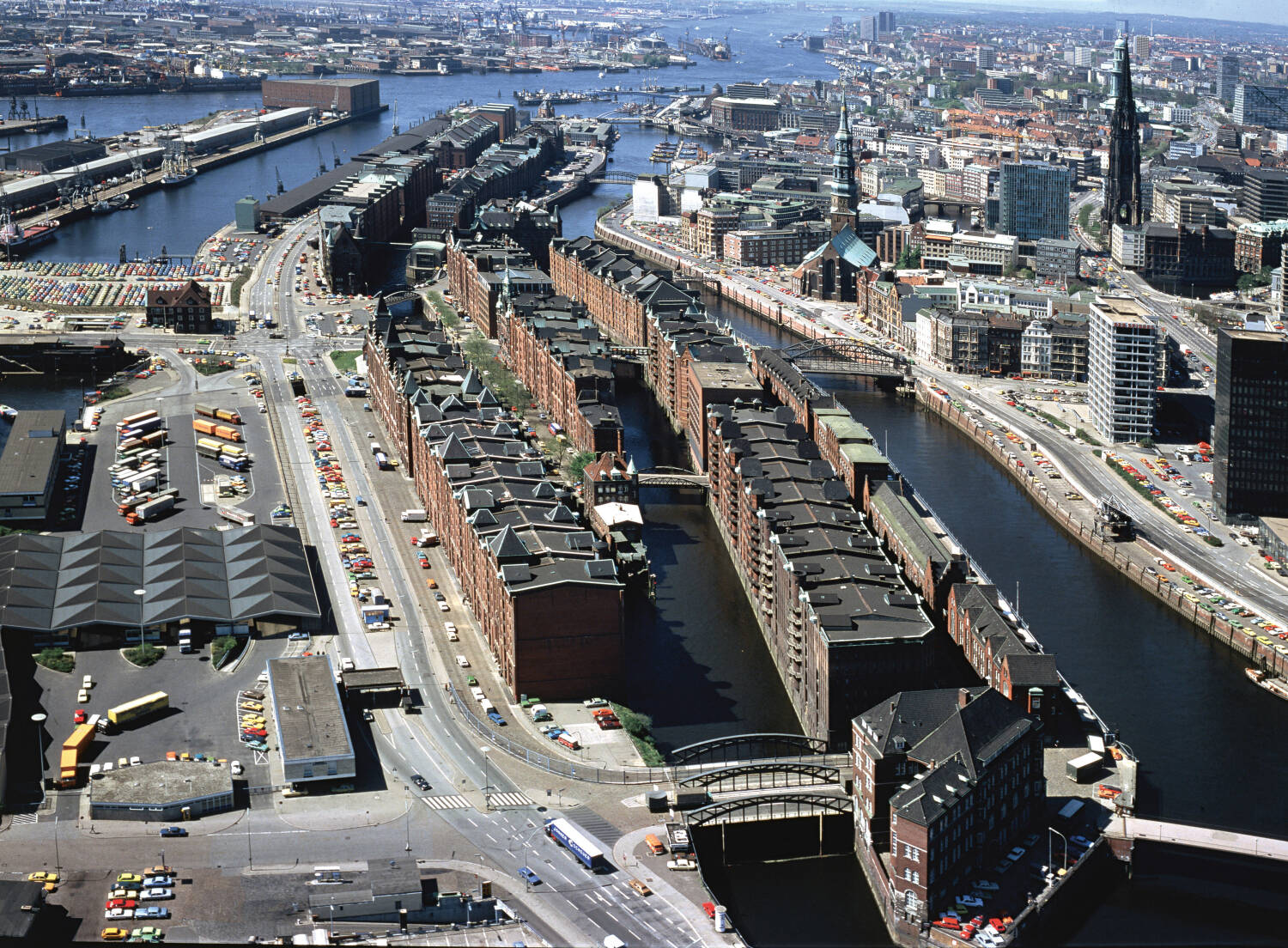
Free port in the heart of the city: Many logistics companies still worked here until the end of the 1990s; the free port bordered directly on busy city districts. It is also thanks to HHLA that HafenCity now offers attractive apartments on the waterfront.
Forklift ballet
read more


Hamburger Hafen und Logistik Aktiengesellschaft
Bei St. Annen 1
20457 Hamburg
Phone +49 40 3088-0
www.hhla.de/en
Responsible in terms of the German press law
Carolin Flemming, Head of Corporate Communications
→ Write e-mail
Photo credits
Adobe Stock – Björn Wylezich, HHLA, Thies Rätzke, Ullstein Bild – Rîhrbein, Gustav Werbeck, Friedrich Zitte
Editor in chief
Christian Lorenz
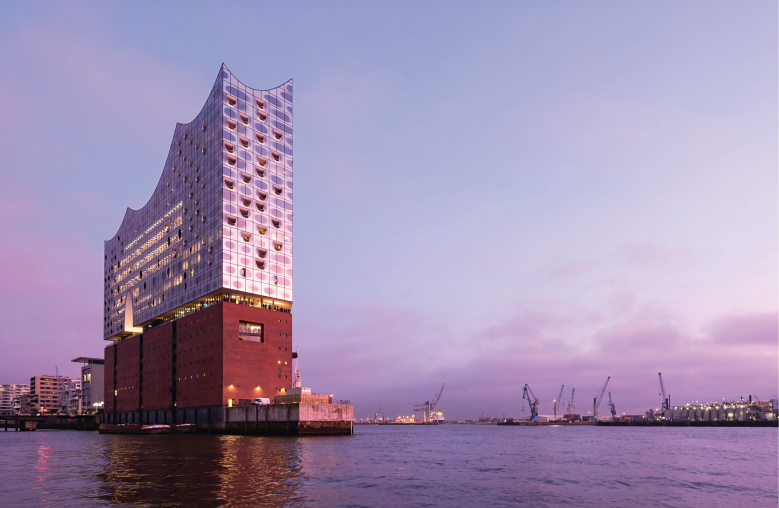
HHLA helped to write the story of the Elbphilharmonie and HafenCity. More than most Hamburg residents know.

Hamburger Hafen und Logistik Aktiengesellschaft
Bei St. Annen 1
20457 Hamburg
Phone +49 40 3088-0
www.hhla.de/en
Responsible in terms of the German press law
Carolin Flemming, Head of Corporate Communications
→ Write e-mail
Editor in chief
Christian Lorenz
Photo credits
Adobe Stock – Björn Wylezich, HHLA, Thies Rätzke, Ullstein Bild – Rîhrbein, Gustav Werbeck, Friedrich Zitte
The tip of the Kehrwieder, which marks the northern boundary of the Speicherstadt historical warehouse district, had always shaped the water side of Hamburg. For a long time, a building stood here with a so-called time ball towering above it, enabling navigators on board the ships to set their chronometers. It was badly damaged in World War Two and demolished in 1963. The architect Werner Kallmorgen, who played an instrumental role in the reconstruction of Hamburg, came up with the purist cube design for a new quayside warehouse known as Kaispeicher A. He had designed the roughly 30,000 square-metre space entirely for the storage of break-bulk cargo. However, such bags, crates and barrels had barely been handled since the container conquered the port on the other side of the Elbe.
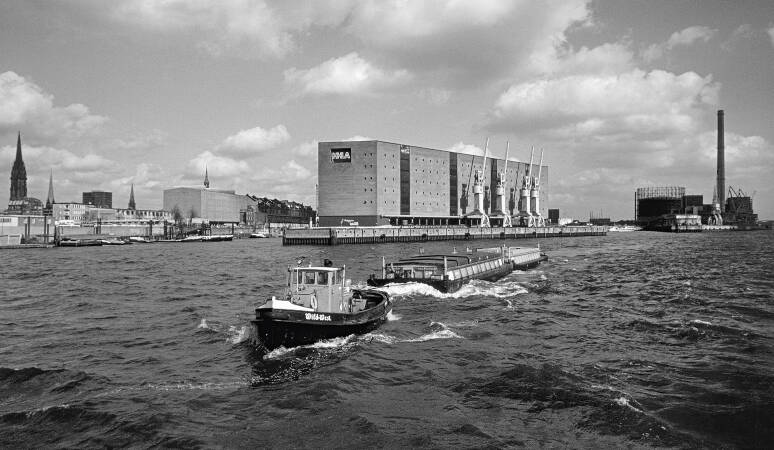
From the Kaispeicher to the Elbphilharmonie was a long way. The building bearing HHLA’s logo has not been used for port handling since the 1970s. The old structure is still clearly recognisable in Hamburg’s new landmark.
The semi-gantry cranes, which still stand refurbished outside the concert hall, no longer handled many ships, and the storage areas were not used to capacity. It stood empty for a long time before even longer discussions were held about the highly attractive location. It was not until the end of 2003 that the Hamburg Senate backed the concept of an “Elbphilharmonie”, which today sits spectacularly atop the former HHLA warehouse.
Urban development in the port
After the fall of the Wall, Hamburg grew at an unimaginable speed. But where else could the city expand? Even though certain areas belonged to it, they were anything but freely available. The land around Sandtorhafen, for example, where the free port extended to the fringes of the city centre. Long-standing tenants sat there and successful logistics specialists worked there. The task of acquiring this land for the construction of a HafenCity was taken care of by the specially founded Gesellschaft für Hafen- und Standortentwicklung (GHS). This wholly owned HHLA subsidiary bought up usage rights and real estate in the years that followed. In fact, it was able to bring all the properties in question under its – and thus municipal – control. It is astonishing that the “secret state action” remained concealed from the public for six years. This prevented speculation and price gouging. It was only when the urban development “master plan” was ready that Hamburg’s Mayor Henning Voscherau presented the concept of a HafenCity on 7 May 1997.
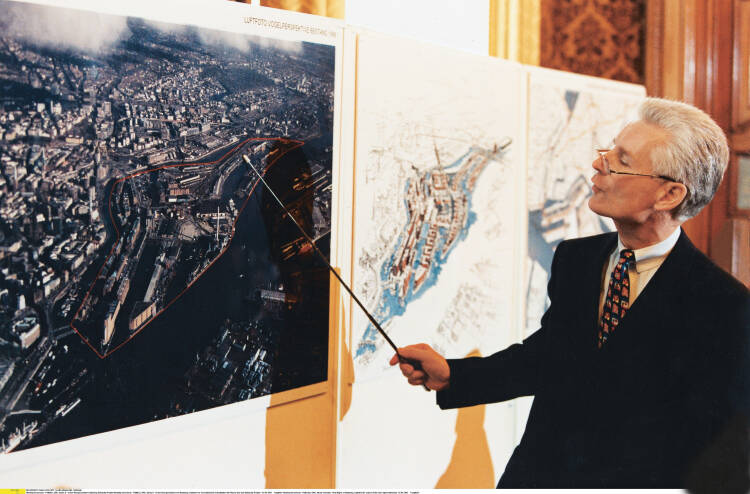
Secret preparations: When Hamburg’s Mayor Henning Voscherau presented the plans for a “HafenCity” on 7 May 1997, the public was surprised. Only a few associates at HHLA had known about it.
Only a small group around the then HHLA Chairman of the Executive Board Peter Dietrich had known about it. As part of the secret deal, HHLA finally got the opportunity to build a new container terminal. It swapped the land acquired for urban development for an extensive site in the former fishing village of Altenwerder. The port expansion had been planned for around 40 years, and now it could finally become reality.
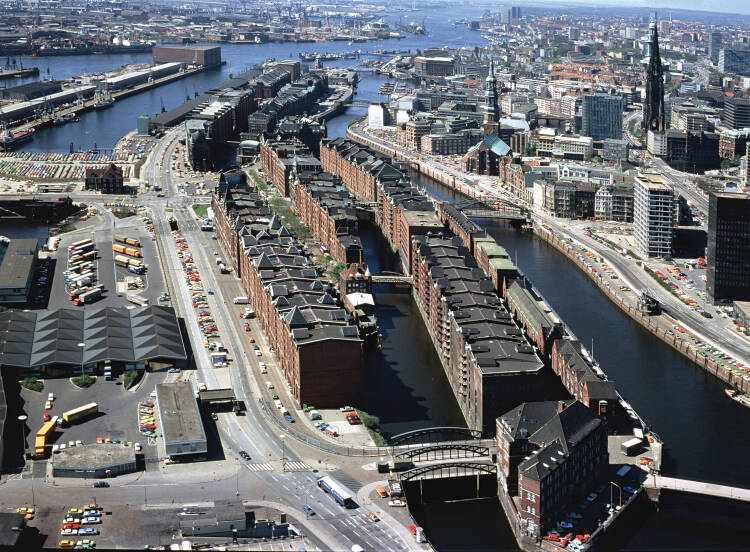
Free port in the heart of the city: Many logistics companies still worked here until the end of the 1990s; the free port bordered directly on busy city districts. It is also thanks to HHLA that HafenCity now offers attractive apartments on the waterfront.
Forklift ballet
read more
